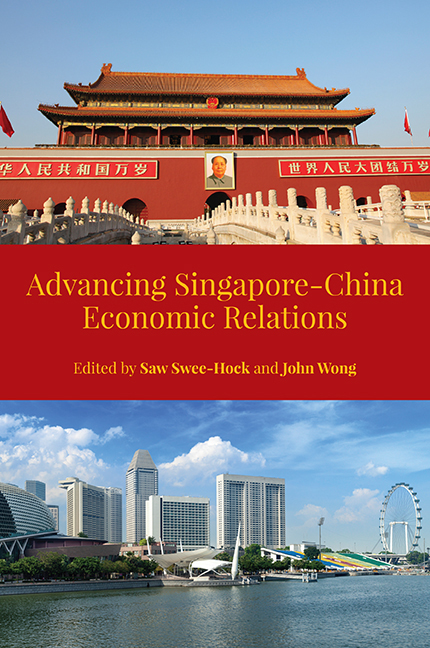Book contents
- Frontmatter
- Contents
- List of Tables
- List of Figures
- Preface
- The Contributors
- 1 Evolution of Singapore-China Economic Relations
- 2 The Political Economy of Singapore's Unique Relations with China
- 3 Suzhou Industrial Park: Going Beyond a Commercial Project
- 4 Translating Concept into Practice: Sino-Singapore Tianjin Eco-City Project
- 5 China's Foreign Direct Investment in Singapore since the 2000s
- 6 Singapore's Direct Investment in China since the 1980s
- 7 Singapore-China Trade and CSFTA
- 8 Growth of Tourism between China and Singapore
- 9 Enhancing Educational Collaborations between China and Singapore
- Index
7 - Singapore-China Trade and CSFTA
Published online by Cambridge University Press: 21 October 2015
- Frontmatter
- Contents
- List of Tables
- List of Figures
- Preface
- The Contributors
- 1 Evolution of Singapore-China Economic Relations
- 2 The Political Economy of Singapore's Unique Relations with China
- 3 Suzhou Industrial Park: Going Beyond a Commercial Project
- 4 Translating Concept into Practice: Sino-Singapore Tianjin Eco-City Project
- 5 China's Foreign Direct Investment in Singapore since the 2000s
- 6 Singapore's Direct Investment in China since the 1980s
- 7 Singapore-China Trade and CSFTA
- 8 Growth of Tourism between China and Singapore
- 9 Enhancing Educational Collaborations between China and Singapore
- Index
Summary
Introduction
Since the establishment of diplomatic relationship between China and Singapore in 1990, bilateral trade has increased remarkably from US$2.82 billion to US$57.06 billion in 2010, with an average annual growth rate of 16.2 per cent. According to the statistics of International Enterprise Singapore, China was Singapore's third-largest export market and import source in 2010. On 23 October 2008, China and Singapore signed the China-Singapore Free Trade Agreement (CSFTA) which further accelerates the liberalization of bilateral trade in goods and services. This chapter examines the general and structural features of China-Singapore bilateral trade and the potential effect of the establishment of CSFTA on bilateral trade.
Development of China-Singapore Bilateral Trade
Based on trade data for the period of 1990–2010, the development of China-Singapore bilateral trade can be examined in different phases.
Firstly, as shown in Table 7.1 the bilateral trade has kept increasing since 1990, except for two temporary declines in 1998 and 2009 due to the Asian financial crisis and the global financial crisis respectively. The trade value has grown rapidly from US$2.82 billion in 1990 to US$57.06 billion in 2010. To be more specific, China's export to Singapore has increased from US$1.97 billion in 1990 to US$32.35 billion in 2010, with an average annual growth rate of 15.0 per cent. China's import from Singapore has reached US$24.71 billion in 2010 compared to US$84.08 million in 1990, with an average annual growth rate of 18.2 per cent. According to trade intensity index (TII), as shown in Table 7.2, the bilateral trade relations have remained close.
Secondly, China is an increasingly important trading partner for Singapore, while Singapore's position in China's import and export remain stable. The share of Singapore's total export to China has grown from 1.5 per cent in 1990 to 10.3 per cent in 2010, and the share of Singapore's import from China in its total import has increased from 3.4 per cent to 10.8 per cent. According to the recent statistics produced by International Enterprise Singapore, China has become the largest trading partner of Singapore in January 2011.
- Type
- Chapter
- Information
- Advancing Singapore-China Economic Relations , pp. 181 - 215Publisher: ISEAS–Yusof Ishak InstitutePrint publication year: 2014

